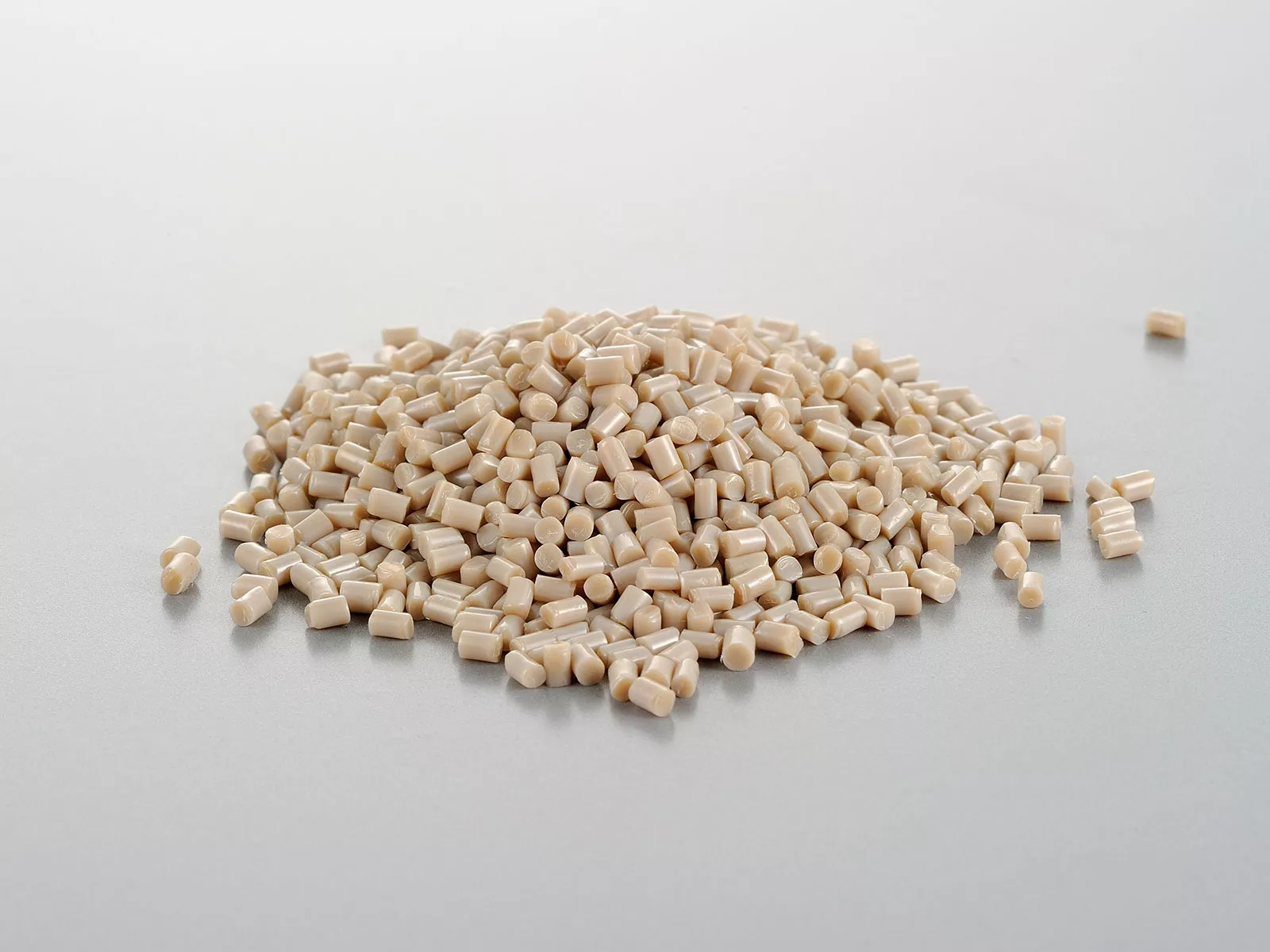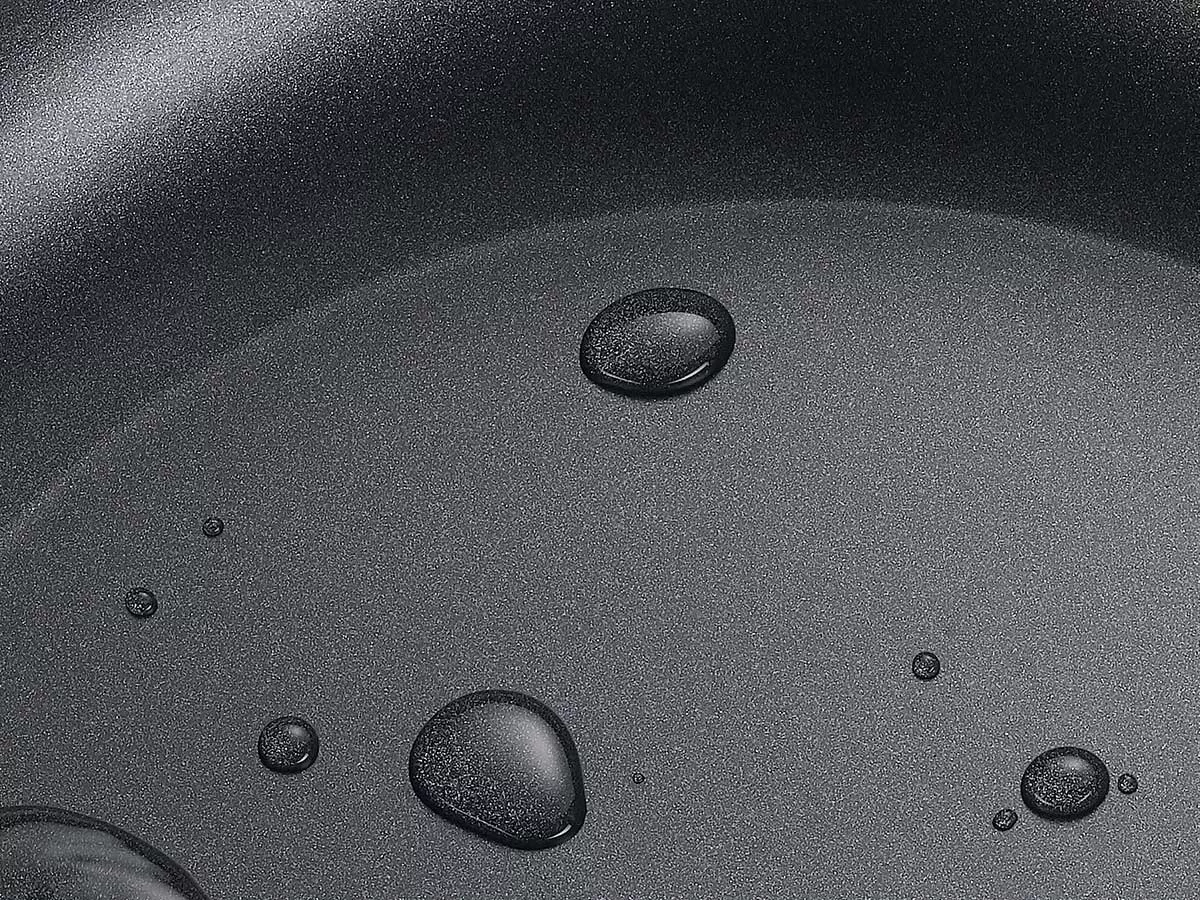1. Teflon
Teflon is a household name when it comes to non-stick cookware. But what exactly is it? Teflon is the brand name for a synthetic polymer called polytetrafluoroethylene (PTFE). This material is celebrated for its non-stick properties, making it a staple in kitchens around the world.
Key Features of Teflon
- Non-Stick Surface: Teflon's most notable feature is its ability to prevent food from sticking. This makes cooking and cleaning a breeze.
- Heat Resistance: Teflon can withstand temperatures up to 500°F (260°C), making it suitable for a variety of cooking methods.
- Durability: The material is resistant to scratches and doesn't rust, ensuring a long lifespan if properly maintained.
Safety Considerations
While Teflon is incredibly useful, it's important to use it correctly. Overheating Teflon can release fumes that may cause Teflon flu, a temporary flu-like condition. To avoid this, never heat an empty Teflon pan and always use it at recommended temperatures.
Note: Although Teflon is safe under normal cooking conditions, it's crucial to be aware of its limitations to ensure safety.
Environmental Impact
The production of PTFE has raised environmental concerns, particularly due to the use of PFOA, a chemical previously used in its manufacture. Although PFOA is no longer used, the environmental impact remains a topic of discussion.
In summary, Teflon has revolutionized cooking with its non-stick capabilities, but like any product, it requires mindful usage to maximize benefits and minimize risks.
2. Sol-Gel
Sol-gel is a modern technique used to craft water-based oil non-stick coatings. This process involves mixing organic and inorganic materials to form a robust, durable layer on cookware. Here's what you need to know about sol-gel coatings:
- Durability: Sol-gel coatings are celebrated for their long-lasting nature, making them a favored choice in kitchens.
- Temperature Resistance: These coatings can endure high temperatures, often reaching up to 500°F, which is crucial for various cooking methods.
- Safety: Unlike some traditional coatings, sol-gel is free of harmful chemicals, offering a safer option for cooking.
Comparison of Non-Stick Coatings
| Type | Durability | Temperature Resistance | Safety Level |
|---|---|---|---|
| PTFE | Moderate | Up to 400°F | Moderate |
| Sol-Gel | High | Up to 500°F | High |
Sol-gel coatings are gaining popularity due to their safety and efficiency in cooking. They represent a significant advancement in non-stick technology, making them a great choice for both home cooks and professional chefs alike.
In summary, sol-gel technology is a game-changer in the world of non-stick coatings, offering a blend of safety, durability, and high-temperature performance. This makes it a fantastic choice for anyone looking to enhance their cooking experience.
3. Non-Stick Cookware
Non-stick cookware is a game-changer in the kitchen, making cooking and cleaning a breeze. These pans are designed to keep food from sticking, which means less time scrubbing and more time enjoying your meal.
Key Points About Non-Stick Cookware:
- Oil Usage: You can cook without oil, but adding a little can enhance flavors, especially with sticky foods like fish.
- Cleaning Tips: Use soft sponges or cloths to clean non-stick surfaces. Avoid steel wool, which can scratch the coating. For tough stains, soaking in warm water can help.
- Cooking Temperatures: Stick to medium or low heat. High temperatures can damage the coating, reducing its lifespan.
Non-stick cookware is perfect for those who want to cook with less oil. Just remember, handling it with care is crucial to maintaining its quality and safety.
A Few Drawbacks
While non-stick pans are fantastic, they aren't without their downsides:
- Degrades Quickly: Using the wrong sponge or utensils can damage the coating, reducing its lifespan.
- Contains Chemicals: Some non-stick coatings have chemicals that might be harmful if overheated.
- Limited Uses: Best for low to medium heat; high heat can cause degradation.
In conclusion, non-stick cookware is incredibly convenient, but it's important to use and care for it properly to get the most out of it. For more on care tips, consider using mild dish soap and soft sponges, and avoid dishwashers and metal utensils. Proper storage, like using cloths between stacked pans, can also help extend their lifespan.
4. Recommended Utensils
When it comes to using non-stick cookware, the type of utensils you use can make a big difference in maintaining the quality and longevity of your pots and pans. Here are some utensils that are highly recommended:
- Silicone Spatula: Silicone is a great material for non-stick surfaces. It won’t scratch or damage your cookware. Plus, it’s heat resistant, which means it can handle the heat without melting or warping.
- Wooden Spoon: Wooden utensils are gentle on non-stick coatings and won’t cause damage. They’re perfect for stirring and mixing without scraping the surface.
- Nylon Tongs: These are perfect for gripping and turning food without scratching the surface of your pans. Nylon is durable and can withstand high temperatures.
Using the right utensils helps maintain the quality of your non-stick cookware and ensures a better cooking experience.
Material Matters
- Silicone: Look for utensils with a 100% BPA-free silicone head to ensure safety and durability.
- Wood: Wooden utensils are not only gentle but also add a rustic charm to your kitchen.
- Metal: While metal utensils are generally not recommended, if you must use them, opt for those with rounded edges to minimize potential damage.
To keep your non-stick cookware in top shape, always wash your utensils by hand and avoid abrasive cleaners. Proper storage is also key to preventing any unnecessary damage. By choosing the right kitchen utensils, you can enjoy a seamless cooking experience while extending the life of your cookware.
5. Care Tips
Taking care of your water-based oil non-stick cookware is key to making it last. Here are some tips to keep your pans in great shape:
Cleaning
- Avoid abrasive materials: Steer clear of steel wool or hard scrubbing pads that can scratch the surface. Instead, opt for soft sponges or cloths.
- Soak for stubborn stains: If food is really stuck on, let the pan soak in warm, soapy water for about 15 to 30 minutes. This will help loosen any residue, making it easier to clean with a soft-bristled brush. Learn more about cleaning nonstick pans.
- Gentle washing: Always wash your pans by hand. Dishwashers can be too harsh and may damage the coating over time.
Cooking Practices
- Low to medium heat: High temperatures can wear down the non-stick surface. It's best to cook on low to medium heat to preserve the coating.
- Use the right utensils: Stick to wooden, silicone, or nylon utensils to avoid scratching. Metal utensils can damage the coating, so they're best avoided.
Storage
- Avoid stacking: When stacking pans, place a soft cloth or paper towel between them to prevent scratches.
- Proper placement: Store your cookware in a dry place to prevent any moisture-related issues.
Taking a little extra care with your non-stick cookware can greatly extend its lifespan. It's all about gentle handling and mindful cleaning.
By following these care tips, your non-stick cookware will stay in top condition, making cooking and cleaning a breeze. For more on selecting the best non-stick cookware, consider factors like durability and heat resistance to match your cooking needs. Explore more about customizing non-stick coatings.
Wrapping It Up
So, there you have it, folks. Water-based oil non-stick coatings are pretty nifty, right? They make cooking a breeze and cleaning up even easier. Plus, they're a healthier option since you don't need to drown your food in oil. Just remember, treat your cookware with a little TLC—use the right utensils and keep the heat in check. By doing so, you'll keep your pans in tip-top shape for longer. Hopefully, these facts help you make smarter choices in the kitchen. Happy cooking!









